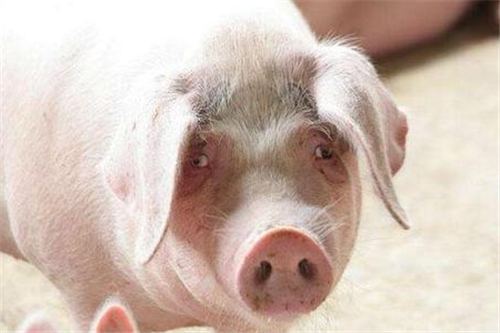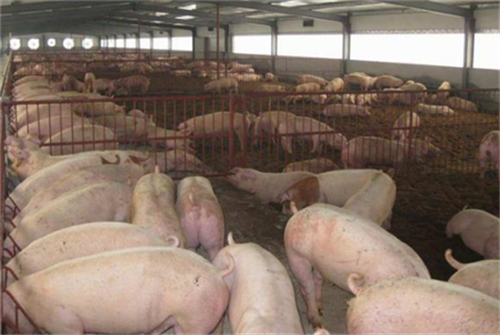Foot-and-mouth disease is the most effective way to prevent it!
Foot-and-mouth disease (FMD) is an acute, febrile and highly contagious infectious disease caused by foot-and-mouth disease virus and can infect almost all cloven-hoofed animals (pigs, cattle, sheep, etc.). It is the most contagious animal infectious disease found so far and does the greatest harm to animal husbandry. Features: fast transmission and wide epidemic range. Blisters and ulcers occur in the skin of oral mucosa, hooves and breasts of adult animals, and the mortality of young animals is increased due to myocardial damage.
First, the introduction of mouth and foot
1.0 epidemic prevention
1.1 Survival time of the virus in the environment
The virus survived for 14 days in dry feces, 6 months in mud and 39 days in urine. It can survive for 3 days in summer and 28 days in winter in soil.
1.2 spread
2.2.1 through human transmission, people who come into contact with infected animals can maintain and exhale the virus for up to 36 hours and become a source of infection.
1.2.2 airborne
The aerosols of infected animals are transmitted through the air, and the amount of virus excreted by pigs is the largest, with 400000000 virus particles excreted every day. Cattle are most susceptible to air-soluble transmission, and one cow can be infected with 0 to 12 virus particles. Birds can also play a role in transmission.
1.3 immunity against foot-and-mouth disease
There are seven serotypes of foot-and-mouth disease, which are independent of each other. At present, swine foot-and-mouth disease is mainly type O, An and Asia1. Among them, type O foot-and-mouth disease is the most infected and the most difficult to prevent and control, which should be paid attention to. We need to remind you that type O foot-and-mouth disease vaccine has no cross-protective effect on type A foot-and-mouth disease. At present, there are only cattle and no pigs for foot-and-mouth disease type A vaccine. However, the foot-and-mouth disease vaccine of cattle can not be used to fight pigs, but the foot-and-mouth disease vaccine of pigs can be used to fight cattle. Because the vaccine against foot-and-mouth disease in pigs needs high antigen content, generally speaking, the amount of vaccine used to beat one pig can be used to beat 10 cattle, and the amount of vaccine used by 10 cattle can only be used to beat one pig.
Immunization is one of the comprehensive measures for the prevention and control of foot-and-mouth disease, and immunization can reduce the susceptibility of animals; effective immunization can reduce the spread of the virus among animals: it can reduce the amount of virus emissions; then if foot-and-mouth disease occurs, can emergency vaccination control the epidemic? The results showed that the effect of emergency immunization of dairy cows was better, followed by sheep, and the effect of emergency immunization of pigs was the worst, which could not eliminate foot-and-mouth disease, but could reduce the number of virus transmission.
It is still doubtful whether the outbreak of foot-and-mouth disease in pigs can be controlled by immunization. Immunization does not prevent transmission, but it can delay outbreaks. The protection rate of group immunity reaches 85%, which can provide group protection to ensure that foot-and-mouth disease will not have a pandemic.
Immunization against foot-and-mouth disease can reduce the number of cases and gradually reduce the virus in the environment, but it will not eradicate the disease.
In addition, the vaccine can not protect animals from foot-and-mouth disease, daily biosafety measures are very important. Some large pig breeding farms in the south are not allowed to enter cars carrying pigs and feed within a kilometer outside the farm.
1.3.1 factors affecting the immune effect of foot-and-mouth disease vaccine
The factors affecting the immune effect of foot-and-mouth disease vaccine mainly include the following: the efficacy of the vaccine itself (some vaccine antigen content is not enough); vaccine storage conditions; vaccine use (polyvalent vaccine is better than univalent vaccine); matching between vaccine strains and epidemic strains; maternal antibodies; immune tolerance, immunosuppressive diseases, especially blue ear disease (if blue ear disease occurs in pig farms, it is more likely to be infected with foot-and-mouth disease).
1.3.2 difference between Bovine foot-and-mouth Disease and Porcine foot-and-mouth Disease
1.3.2.1 the speed of immune response is different: the immune response is faster in cattle and slower in pigs.
1.3.2.2 the immune effect is different: the immune effect of cattle is better.
1.3.2.3 the amount of antigen needed for immunization is different: there are more pigs and fewer cattle. In the 1960s and 1970s, when pigs were immunized in the Netherlands, the antigen content of pig vaccine was 4-10 times higher than that of cattle. Therefore, pig foot-and-mouth disease vaccine can be used to immunize cattle, but immunizing pigs with bovine foot-and-mouth disease vaccine can not achieve the effect of immune protection.
1.3.2.4 differences in infection routes: cattle were infected through respiratory tract.
1.3.2.5 difference in virus emission: there are more pigs and fewer cattle.

2. The most common questions about blue ear disease vaccine
2.1 Application strategy of gene deletion blue ear disease vaccine
2.1.1 in the case of unstable breeding pigs and unstable growing pigs, the first immunization interval was 4 weeks, and the piglets were not immunized at this time.
2.1.2 unstable for breeding pigs and stable for growing pigs
The whole group was immunized, and the piglets were immunized twice at the interval of 4 weeks for the first time.
2.1.3 stable breeding pigs and unstable growing pigs
The sows were immunized every time after delivery, and the piglets were immunized for 2 to 4 weeks.
2.1.4 if the breeding pigs are stable, the growing pigs may not be immunized, or the sows can be immunized every time after delivery, and the piglets will be immunized for 2 to 4 weeks. Considering the possible infection of classical swine fever, piglets can be immunized with blue ear disease vaccine and classical swine fever vaccine at the age of 4 weeks.
2.2 points for attention in the application of vaccine
1.2.1 A pig farm and a pig herd use only one attenuated vaccine to prevent mutual interference and avoid the risk of recombination.
2.2.2 Vaccines with low virulence and little side effects should be used to prevent adverse effects on pigs and immunosuppressive effects on pigs.
2.2.3 Vaccines with good homology should be used, and mutants should be vaccinated with mutants.
2.2.4 Vaccines that are carried in the body for a short time should be used to prevent the virus from returning to virulence for too long and to prevent the spread of the virus to non-immunized pigs.
2.2.5 use a heat-resistant protective agent vaccine to ensure the stability of the vaccine dose.
How to effectively prevent and control foot-and-mouth disease?
Clear overall goal: foot-and-mouth disease virus has six fears: fear of high temperature, fear of sunlight, fear of acid, fear of alkali, fear of formalin, fear of vaccine.
Ensure that the environment in the pigsty is dry, the room temperature is controlled between 15-22 degrees, and the piglets in the delivery room are provided with an incubator (the temperature is controlled at 25-28 degrees).
two。 Once the phenomenon of foot-and-mouth disease is found in the surrounding area, emergency vaccination should be carried out on the pigs in this farm, and the shed should be disinfected with caustic soda and quicklime at the same time; the space of the pig house should be sprayed with potassium permanganate or iodine solution, and the air should be disinfected.
3. Improve the body resistance of pigs and do a good job in pig farm health care. It is suggested to enhance the non-specific immunity of pigs, especially the ability to resist viral diseases.
4. Do a good job of foot-and-mouth disease vaccine immunization in pig farms: sows are immunized every 4-6 months, fattening pigs are immunized twice, 23-25 days old are first immunized, 60 days old are second immunized. However, the immune stress of foot-and-mouth disease vaccine is particularly serious, its clinical manifestations are: allergy to the ground, shortness of breath, skin cyanosis, elevated body temperature, decreased food intake, serious and even death. Therefore, most pig farms are unwilling to be vaccinated, which brings great difficulties to the prevention and control of foot-and-mouth disease. In view of vaccine stress, alleviate the immune stress and allergic reaction of foot-and-mouth disease vaccine, produce high level of foot-and-mouth disease antibody, increase daily gain, reduce the ratio of feed to meat, prevent the occurrence of foot-and-mouth disease and improve the efficiency of breeding.
Third, foot-and-mouth disease has already occurred in the pig farm, how to deal with it?
General principle: when foot-and-mouth disease or suspected foot-and-mouth disease occurs in pig farms, effective emergency measures must be taken in accordance with the principle of "early, fast, strict and few" to eradicate foot-and-mouth disease in the bud as soon as possible.
Early: once found immediately quarantined, other pigs will be vaccinated urgently.
Quick: immediately seal off the epidemic site and prohibit the sale of any pigs during the disease. The breeders of this production line should not work in other pig houses, and immediately use disinfectants with good effect on the virus to strictly disinfect pig houses, pig herds and main channels in the production area.
Yan: culling sick pigs is a key measure to control the spread of foot-and-mouth disease. Dead pigs are deeply buried.
Less: according to the condition of sick pigs for a small amount of treatment, such as: there are symptoms of myocarditis, a small amount of cardiotonic drugs can be used. Apply purple potion to the broken hoof. (source: Internet)
- Prev

PED is the number one killer of piglets and has to be guarded against in autumn and winter.
PED is the number one killer of piglets and has to be guarded against in autumn and winter.
- Next

Five common causes of difficult control of classical swine fever in clinic and their countermeasures
Five common causes of difficult control of classical swine fever in clinic and their countermeasures
Related
- On the eggshell is a badge full of pride. British Poultry Egg Market and Consumer observation
- British study: 72% of Britons are willing to buy native eggs raised by insects
- Guidelines for friendly egg production revised the increase of space in chicken sheds can not be forced to change feathers and lay eggs.
- Risk of delay in customs clearance Australia suspends lobster exports to China
- Pig semen-the Vector of virus Transmission (4)
- Pig semen-the Vector of virus Transmission (3)
- Five common causes of difficult control of classical swine fever in clinic and their countermeasures
- Foot-and-mouth disease is the most effective way to prevent it!
- PED is the number one killer of piglets and has to be guarded against in autumn and winter.
- What is "yellow fat pig"? Have you ever heard the pig collector talk about "yellow fat pig"?

